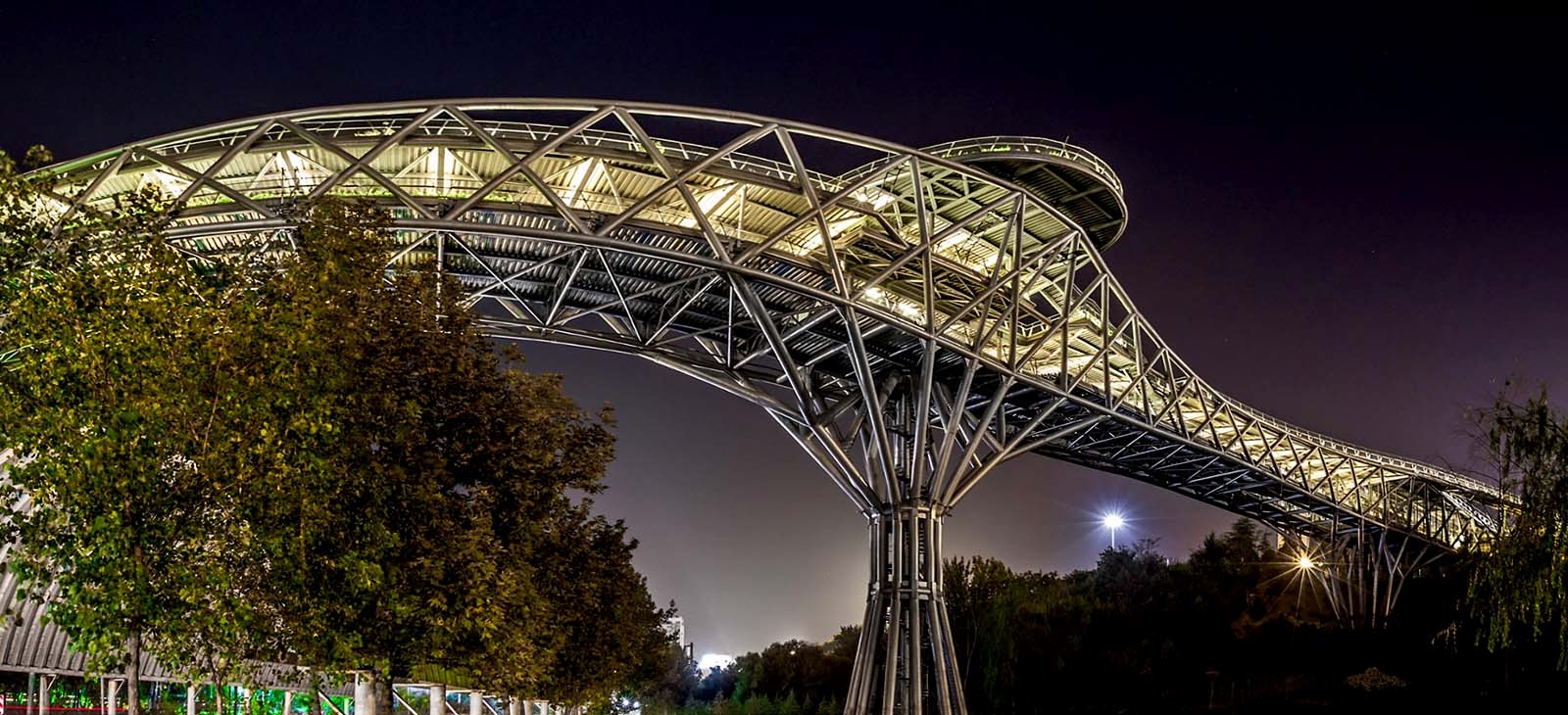Pol-e Tabi'at (literally:“Nature Bridge”)
Pol-e Tabi'at (literally:“Nature Bridge”) is the largest pedestrian overpass built in Tehran, Iran. The 270-metre (890 ft) bridge connects two public parks—Taleghani Park and Abo-Atash Park—by spanning the Shahid Modarres, one of the main highways in northern Tehran. The word tabiatmeans "nature" in the Persian language.
Tabiat Bridge was designed by Leila Araghian as part of a local competition for the design of a bridge to connect two parks in north Tehran which were separated by a highway.
Leila Araghian is an Iranian architect. She has a Master of Architecture degree from the University of British Columbia, where she won the UBC Architecture Alumni Henry Elder Prize. She previously studied architecture in Iran, at Shahid Beheshti University. In 2005, Araghian co-founded Diba Tensile Architecture, a company specialising in the design, manufacture and installation of membrane structures. She was chief architect and designer of the Tabiat Bridge in Tehran.
In designing the bridge, a process which took a total of a year, Araghian wanted it to "be a place for people to stay and ponder, not simply pass." To achieve this the bridge is not straight and contains benches and seating. The bridge has won several awards, including the Popular Choice Prize for Highways & Bridges from the Architizer A+ Awards, a global architectural competition based in New York.
Construction of the bridge started in 2010, using a total of 2000 tonnes of steel and 10000 cubic metres of concrete before it was finished in October 2014. Construction of the bridge over a large highway was described as a big challenge, with platforms and temporary tunnels built to ensure that nothing fell on to the road below.

